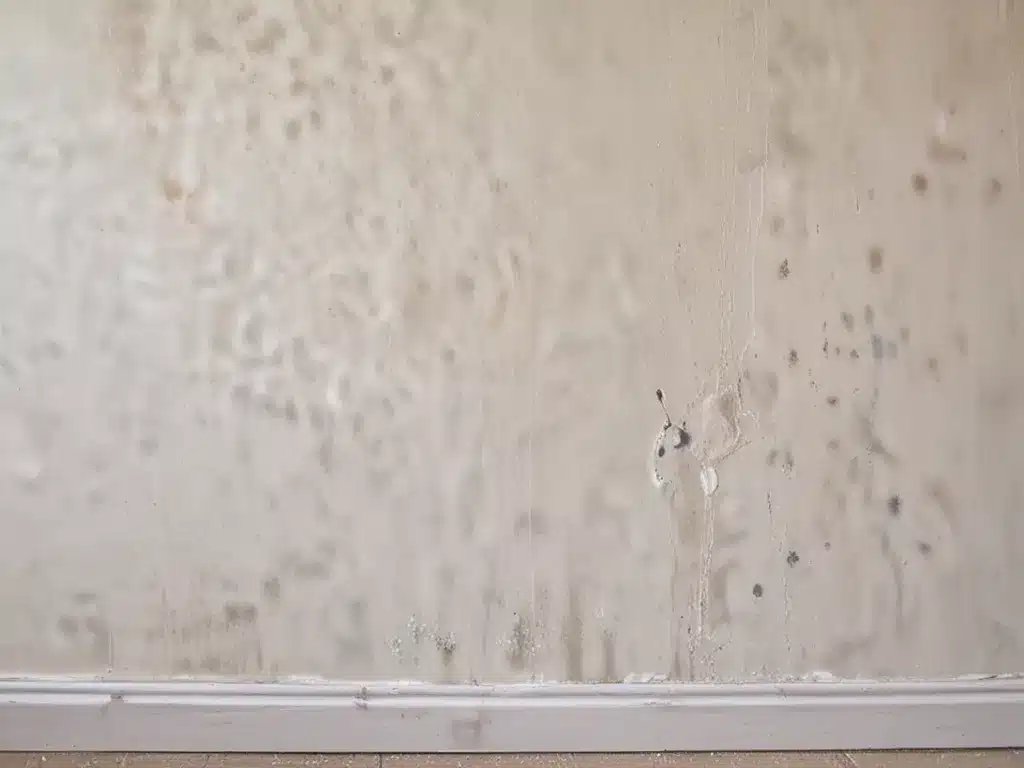What is Mould and Why it is Harmful?
Mould is a type of fungus that grows in damp and humid environments. It can be different colors, like black, green, white, or grey. Mould produces tiny spores that float in the air. When these spores land on a damp surface, they can start growing and spreading.
Exposure to mould can cause a variety of health problems like respiratory issues, allergic reactions, and irritations. Mould spores can trigger asthma attacks and allergies in some people. That’s why it’s important to control moisture and prevent mould growth in your home.
Common Places Where Mould Grows
Mould can grow almost anywhere in your home that remains damp for long periods. Some common problem areas include:
Bathrooms
Bathrooms often have damp surfaces and humid conditions that allow mould to thrive. Check areas like shower curtains, tile grout, ceilings, and window sills. Mould on bathroom walls and ceilings is a sign of high humidity levels.
Kitchens
Kitchens generate a lot of moisture from cooking. Frequent steam from boiling water can lead to mould growth. Inspect under the sink, refrigerator drip pans, and along window sills and cabinets.
Basements and Crawl Spaces
Being underground, basements tend to be damp and prone to mould growth. Look for mould on walls, floors, and stored items. Make sure there is adequate ventilation.
Attics
Improper insulation and ventilation can create warmth and moisture that mould loves. Check for mould in attic insulation, roof trusses, and on stored furnishings.
Windows and Door Frames
Condensation on cold surfaces like windows and doors can facilitate mould. Inspect window sills, frames, weather stripping, and door jambs. Keeping these areas dry prevents mould.
Laundry Rooms
As a damp area, laundry rooms are susceptible to mould behind washers and dryers. Check pipes, walls, and ceilings for any mould spots.
Preventing Mould Growth
Here are some effective tips to prevent mould growth in your home:
-
Control indoor humidity – Ideally keep humidity under 50%. Use exhaust fans, dehumidifiers, and air conditioners.
-
Increase ventilation – Open windows periodically. Make sure bathrooms and kitchen have exhaust fans that vent outside.
-
Fix plumbing leaks – Repair any water leaks and seepage. Prevent water collection in house structures.
-
Insulate cold surfaces – Insulate exterior walls and pipes to reduce condensation.
-
Improve air circulation – Don’t overcrowd rooms. Allow space between furniture and walls.
-
Clean and dry wet areas – Quickly dry bathroom and kitchen surfaces after use. Don’t let water pool or linger.
How to Remove Existing Mould
If you already have a mould issue, here are the steps to remove it:
Step 1: Protect yourself
- Wear gloves, goggles, and an N95 mask to avoid breathing in mould spores. Open windows for ventilation.
Step 2. Fix the moisture issue
- Identify and repair all leaks or sources of dampness allowing the mould to grow.
Step 3. Clean small areas
- Mix detergent and warm water. Scrub mould off hard surfaces. Dry quickly and completely.
Step 4. Kill and remove large mould growth
- Use concentrated cleaning solutions or mold killers. Apply and let sit, then scrub.
Step 5. Discard porous materials
- Porous items like drywall, carpeting, and ceiling tiles may need replacement if the mould damage is severe.
Step 6. Prevent regrowth
- After removing all visible mould, apply mold inhibitor paint or solutions to prevent regrowth. Keep area dry.
When to Call in a Professional
It’s safest to have hazardous mould removal done professionally:
- If you have allergies or asthma that may get aggravated
- For large areas over 10 square feet
- If you see signs of mould growth in HVAC systems, under materials, or in inaccessible places
- If the mould returns despite your cleaning efforts
A professional can assess if rebuilding or major repairs are needed and contain the mould using specialized equipment. They can completely rid your home of the mould and prevent regrowth.
Conclusion
Mould can negatively impact your home’s air quality and your family’s health. By controlling moisture, improving ventilation, and quickly fixing leaks, you can prevent mould from taking hold in your house. Regularly inspecting for mould and cleaning affected areas also keeps it under control. But for severe cases, don’t hesitate to call in a mould remediation specialist. With vigilance and proper care, you can beat the mould and create a healthier home environment.







